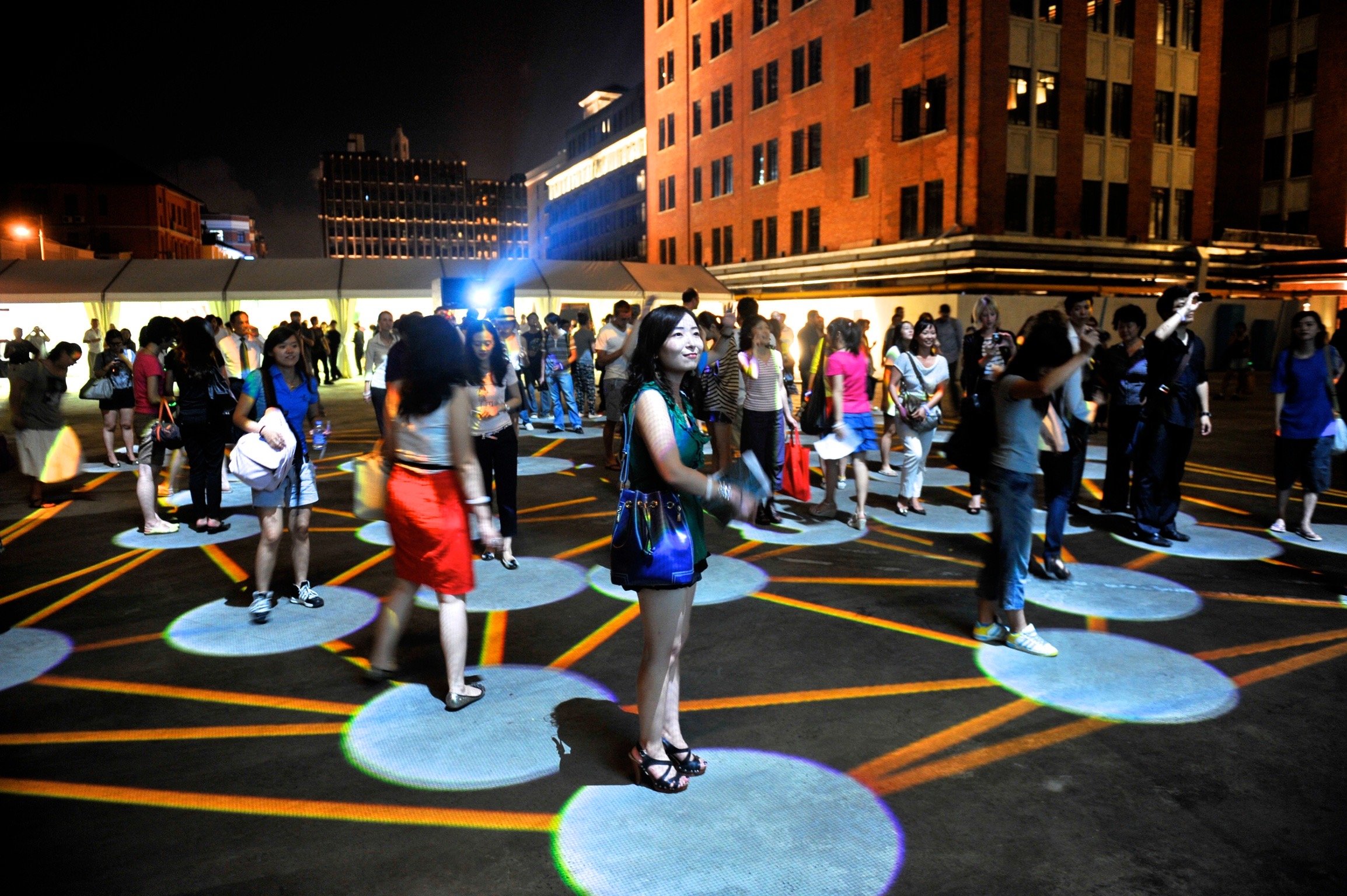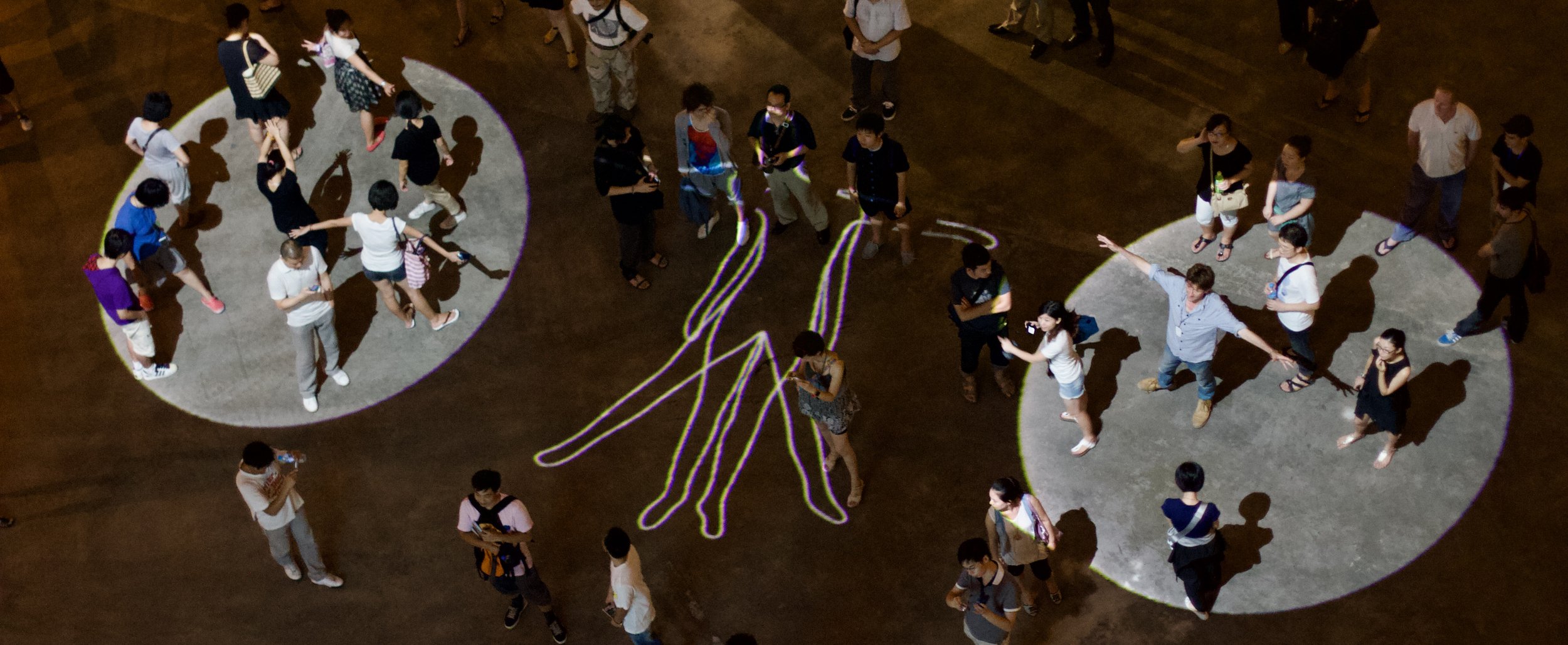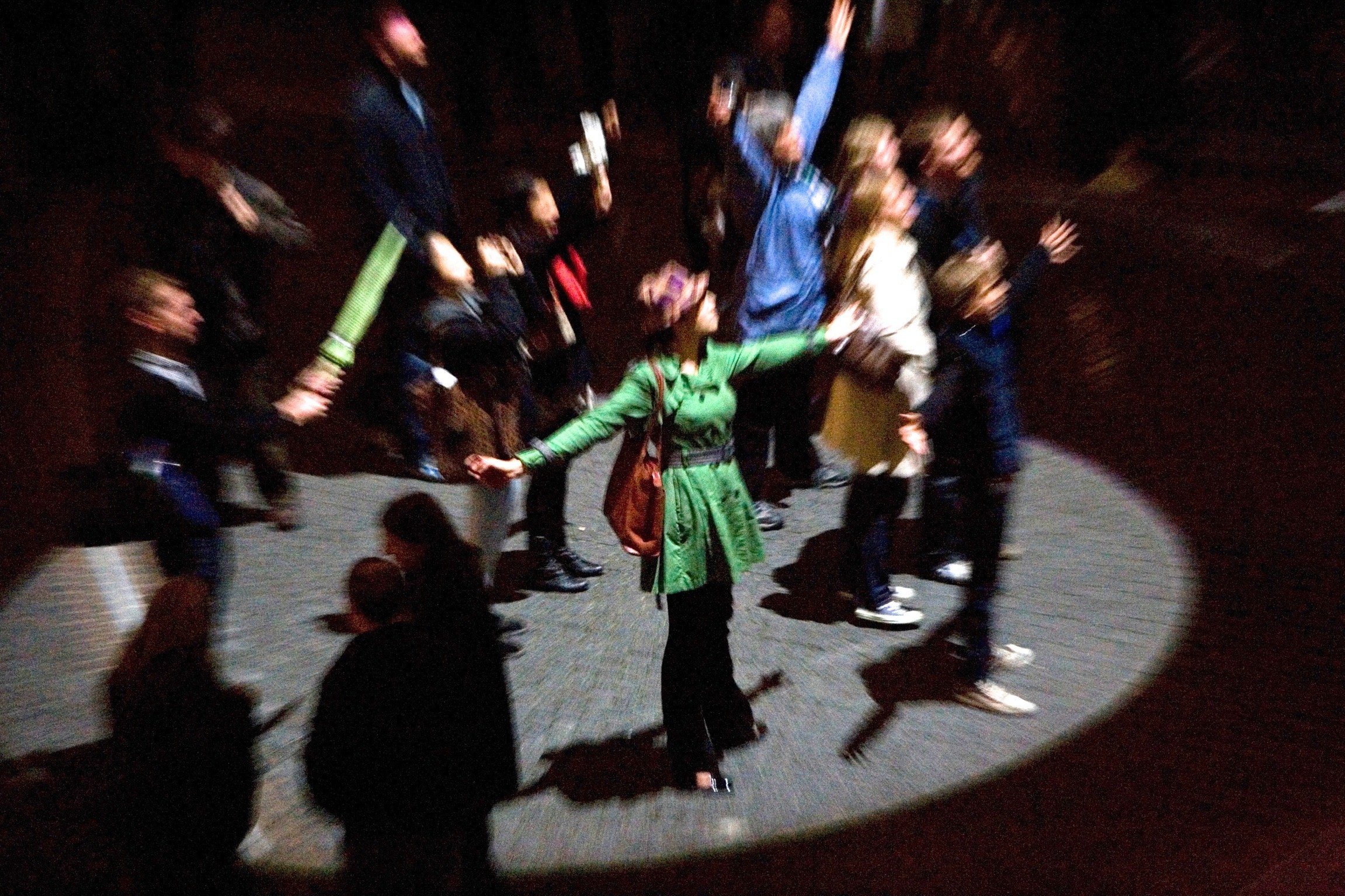Congregation
Large-scale Interactive Installation, projected light and sound (2010)
Congregation is the most performed of KMA’s large-scale outdoor work, with over 500 performances across Europe, China, and the USA. Congregation took a random collection of total strangers, often just passers-by, and turned their individual curiosity into a meaningful collective experience. Its participants created an experience that highlighted the absence of a hierarchy involving either an artist or creator or prescribed performer.
-

The Work
Congregation works on a 25-minute cycle. Each cycle uses the same music (by Portland-based composer Peter Broderick), and each section of each cycle uses the same algorithmically programmed series of ‘provocations’. In this sense, the piece is predictable. But no one cycle is ever the same as another. Different countries, different nights, different moods, different weather, different people minutes apart; the variables in each instance are the congregation, the performers who animate the space and bring the work into being. Developing broad narrative themes: the individual versus the collective, aloneness versus togetherness, monotheism versus humanism, Congregation explores the physical and empathic connections that separate us and conjoin us.
Conceived, choreographed and composed entirely for incidental pedestrian performers, Congregation offers no prescription, and no guidance. The large assembled group of participants simply explores the work together. Via this exploration, the conflation of isolated urban individuals forms a coincidental community, forged through collective curiosity and the desire to form a communal response to a single stimulus; the large outline contour of a human figure at the centre of the work. Congregation blurs the distinction between the audience and the performer, and the resulting social engagements reaffirm the urban community through embodied, rather than verbal, discourse. Freed from restrictive social barriers, the participants take ownership of the work and the environment in which it is staged, creating a sense of occasion that informs and illuminates the public space.
-

Artist's Statement
The idea of communities gathering after dark to enact or watch a drama or ritual lies so deep within us and our ancestral history it's undoubtedly one of the oldest and most essential responses to our shared fate. The mutual empathic response to participating in this way is a powerful feeling. It's not generated by allegiance, or ideology, but simply a common response to the moment. It's strong, it's simple - it's a primitive feeling - and one that summons a sense of connectedness and belonging between strangers across cultural and linguistic barriers. So much of our culture and so much online technology is tied directly to language and we communicate very rarely with our bodies, particularly in public space.
It's fascinating how a very ancient instinct to engage with others in public spaces can be enabled in an empathic, ego-less way by very new technology. This coming together of the very ancient and the very new, the very technological and the very human, is at the heart of our excitement with the work.
Kit Monkman & Tom Wexler
-

Performance History
2016
Enschede, Netherlands.2015
Cagliari, Italy2014
Market Square, Pittsburgh, USA.2012
Macau, China.2012
Bury, UK.2010
Tate Britain, London, UK.Bournemouth, UK.
Rockbund Art Museum, Shanghai, China. As part of UK Pavillion at Shanghai World Expo 2010.
“In linking us together by light, and in patterns controlled by us as us, KMA has created something that is both hugely simple and endlessly complex.”
Adam Scott - Global Head of Design, Hassell; Founder FreeState; Visiting Fellow, Central St Martins.
Our original attraction to working with KMA was the pioneering approach of the artists to interaction in the public realm, particularly the combination of technical competency around responsive systems and their understanding of human behaviour with such systems. When combined with large outdoor projection, KMA demonstrated a new approach to engagement and audience participation we had seen little of outside the work of Rafael Lozano-Hemmer.
In the work of KMA we continually see a desire and belief in what might be termed vernacular interaction combined with an understanding of the performative. We witness mass participation and play. Multiple entry points offer a range of experiences from the visceral to the ontological.
We are made of our relationships to other people and our very own bodies. KMA's work invites us to think further on where one body starts and another finishes, significant and topical questions for a society coming to terms with virtuality and digital embodiment.
Mike Stubbs, CEO FACT (Foundation for Art & Creative Technology). FACT commissioned KMA's 2009 work Strange Attractors — The Anatomy of Dr Tulp for the inaugural AND Festival, Liverpool, UK
Mike Stubbs
Mike Stubbs - Curator/Director







